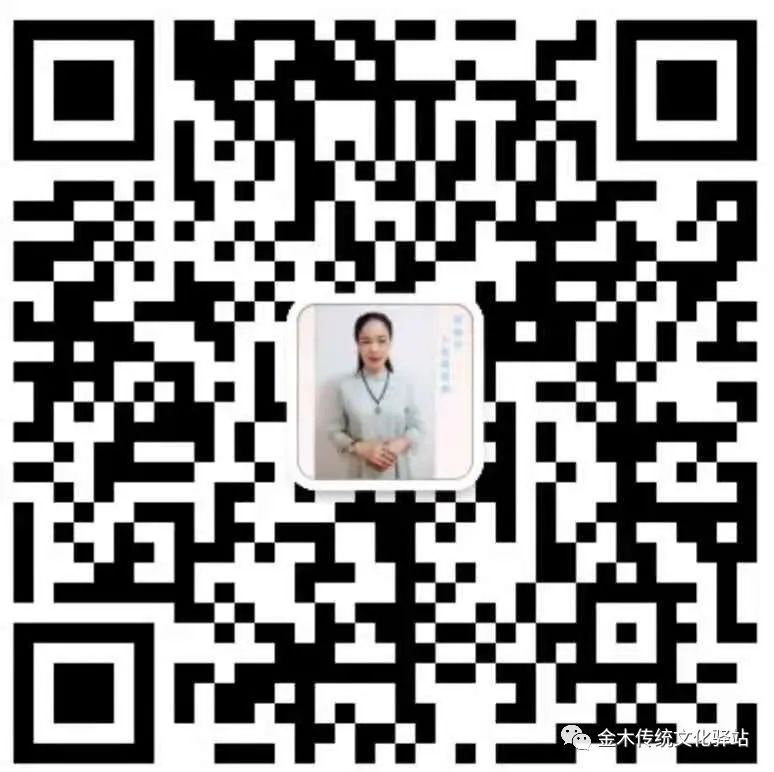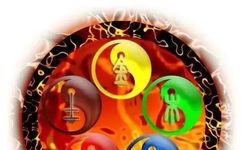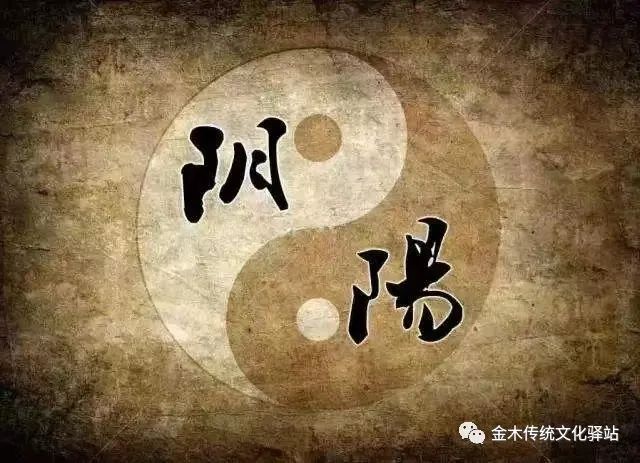
The theory of the Five Elements originates from the Book of Documents, while the concept of Yin-Yang begins with the Book of Changes, both of which were widely practiced by the Yin-Yang school during the Spring and Autumn and Warring States periods. First, let us discuss the Five Elements:
In the “Hong Fan” chapter of the Book of Documents, it states: “After King Wu conquered the Shang, he went to see the wise minister of the Shang, Ji Zi, who presented nine strategies for governing the state, the first of which is called the Five Elements: ‘First is Water, second is Fire, third is Wood, fourth is Metal, and fifth is Earth.'”
Next, the properties of the Five Elements are described:
1. “Water” is said to moisten and descend ── Rainwater, mountain water, and river water all flow downward, moistening the earth to nourish all things. 2. “Fire” is said to rise ── Fire ascends, generating heat, which can manifest as a volcano erupting or as the daily needs of the people. 3. “Wood” is said to be straight or bent ── Trees can be either straight or bent, symbolizing truth and falsehood, with people observing the wood to discern the nature of events. 4. “Metal” is said to be transformative ── In ancient times, metal was referred to as copper, which was used to cast tools, seeking improvement and refinement (transformation). 5. “Earth” is said to cultivate and harvest ── The land produces various agricultural products to sustain humanity.
Furthermore, the “Hong Fan” continues to discuss the flavors associated with the Five Elements:
1. Moistening and descending (Water) is salty. (Salty enters the kidneys) 2. Rising (Fire) is bitter. (Bitter enters the heart) 3. Straight or bent (Wood) is sour. (Sour enters the liver) 4. Transformative (Metal) is pungent. (Pungent enters the lungs) 5. Cultivating and harvesting (Earth) is sweet. (Sweet enters the spleen)
The pre-Qin Daoists and Yin-Yang scholars also recognized the Five Elements as the building blocks of nature, thus transforming the activities of the Five Elements into mutual generation and mutual restraint, incorporating the cycle of time, leading to the emergence of the Yin-Yang Five Elements school. This was first advocated by Zou Yan during the Zhou dynasty and later specified by Confucians in the early Han dynasty, who established the relationships of mutual generation and mutual restraint based on natural phenomena:
1. Metal restrains Wood ── Wood cannot withstand the axe (Metal) 2. Wood restrains Earth ── The roots of trees stabilize the soil 3. Earth restrains Water ── Water floods the land, and earth prevents flooding 4. Water restrains Fire ── The phenomenon of extinguishing fire 5. Fire restrains Metal ── Casting copper into tools 6. Metal generates Water ── Copper mirrors condense moisture from the air into dew 7. Water generates Wood ── Plants rely on moisture to grow 8. Wood generates Fire ── Burning wood generates fire 9. Fire generates Earth ── Earthquakes and eruptions create new land 10. Earth generates Metal ── All metals emerge from the earth

These phenomena are influenced by the changes of time, with different conditions each year, month, day, and hour, thus integrating Yin-Yang (temporal changes) with the Five Elements.
As early as three thousand years ago, Chinese astronomers had already determined the orbit of Tai Sui (Jupiter) and the timing of the winter and summer solstices, thus distinguishing the four seasons and the heavenly stems and earthly branches for timekeeping.
Every year, during the winter solstice in the eleventh month of the lunar calendar (when the sun directly shines on the Tropic of Capricorn), the sun begins to move northward, leading to longer days and shorter nights, referred to as the birth of Yang.
Every year, during the summer solstice in the sixth month of the lunar calendar (when the sun directly shines on the Tropic of Cancer), the sun begins to move southward, leading to shorter days and longer nights, referred to as the birth of Yin.
The year is divided into two parts: from the winter solstice to the summer solstice is Yang, and from the summer solstice to the winter solstice is Yin; this marks the beginning of the division of Yin and Yang. This pattern holds true for the year, and within a day, daytime is Yang, nighttime is Yin, before noon is Yang, and before midnight is Yin (as seen in the twelve hexagrams of the Book of Changes).
In terms of time, Yin and Yang are relative; broadly speaking, matter also exists in a Yin-Yang relationship, and matter is formed by the generation and restraint of the Five Elements, thus Yin-Yang and the Five Elements become one.
The Yin-Yang and Five Elements are the natural elements of composition, and the Daoists, aiming to study nature, apply the Yin-Yang and Five Elements to all matter; thus, we first discuss the Five Elements in the human body ── The Yin-Yang school believes that “humans” are the elite of nature, thus humans are a concrete manifestation of nature, for example: “Humans have hair, just as nature has grass and trees; humans have two eyes, just as nature has the sun and moon; breathing is wind, shedding tears is rain; bones are mountains, blood vessels are rivers, etc., which is called the unity of heaven and man, a concept highly regarded by Confucians in the early Han dynasty.”
The Daoists adopted this theory, combining Yin-Yang and Confucianism as the basis for alchemy and energy cultivation. At that time, all practitioners of Chinese medicine first studied Confucianism, alongside the Yin-Yang and Five Elements, and the study of the Yin-Yang and Five Elements was most refined in Daoism. Therefore, the theories of Chinese medicine are also primarily based on Yin-Yang and the Five Elements, with all texts and teachings stemming from Daoist principles. Thus, those who study Chinese medicine know: the five organs belong to Yang, the liver belongs to Wood, the kidneys belong to Water, the lungs belong to Metal, the heart belongs to Fire, and the spleen belongs to Earth.
The six fu organs belong to Yin, the liver is associated with the gallbladder as a fu organ, the kidneys with the bladder, the lungs with the large intestine, the heart with the small intestine, and the spleen with the stomach. The fu organs are interconnected, and diseases can influence each other. Among the six fu organs, there is the San Jiao (Triple Burner), which divides the human body into upper, middle, and lower sections, and does not belong to the five organs.

According to the theory of mutual restraint among the Five Elements:
1. The liver (Wood) restrains the spleen (Earth) 2. The kidneys (Water) restrain the heart (Fire) 3. The lungs (Metal) restrain the liver (Wood) 4. The heart (Fire) restrains the lungs (Metal) 5. The kidneys (Water) restrain the heart (Fire)
Chinese medicine treats diseases based on the aforementioned theories. For example, stomach pain due to a strong liver is treated by using herbs that soothe the liver, rather than relying heavily on painkillers.
Daoist practices of energy cultivation and alchemy emphasize the interaction between the heart and kidneys, referred to as the harmony of water and fire, also known as the intersection of Kan and Li. Wei Boyang’s work, “Zhou Yi Can Tong Qi,” integrates the Eight Trigrams of the Book of Changes with the theories of Yin-Yang and the Five Elements, thus forming a comprehensive system of Yin-Yang, Five Elements, and Eight Trigrams, which is the core of Daoist studies. The center of the Eight Trigrams is the Taiji, which internally divides Yin and Yang, while the outer eight trigrams are arranged according to the eight directions:
Kan (Water) in the North; Li (Fire) in the South; Zhen (Thunder) in the East; Dui (Lake) in the West; Xun (Wind) in the Southeast; Qian (Heaven) in the Northwest; Kun (Earth) in the Southwest; Gen (Mountain) in the Northeast.
Geomancers use the Eight Trigrams and the twenty-eight lunar mansions, twenty-four solar terms, and sixty-four hexagrams (overlapping Eight Trigrams) to create a compass to determine auspiciousness and inauspiciousness. Astrologers use the Five Elements and Eight Trigrams as a basis for determining fate. Diviners use the Five Elements and Eight Trigrams to predict the future. Each school bases its writings on Daoist teachings.
Daoism worships many deities and is widely revered by the public. The texts of Daoism and the principles of Chinese medicine are all based on the theories of Yin-Yang, Five Elements, and Eight Trigrams, deeply rooted in the lives of the people, with common folk using these concepts daily without awareness; “When the heart fire is excessive, insomnia occurs; when the kidney water is insufficient, the spirit weakens.” Young and old alike can articulate these concepts, yet they originate from Daoism, which is closely related to our lives, and it is hoped that people will pay attention to this.
Yin-Yang —-refers to the two opposing yet interconnected forces present in all things in the world. From the previous discussion, it is clear that Yin-Yang is inherently contained within Qi. Qi flows, from Wuji (the ultimate void) to Taiji (the ultimate reality), the movement of Taiji generates Yin and Yang, and Yin and Yang drive the movement and change of the world and every entity within it.
Five Elements —-is a category used to summarize several basic elements in the world. They are named Wood, Fire, Earth, Metal, and Water, but they do not merely refer to these specific entities themselves; rather, they serve as a basic framework or a model of thought to categorize all phenomena into five fundamental categories. The Five Elements are the basic elements of the world.
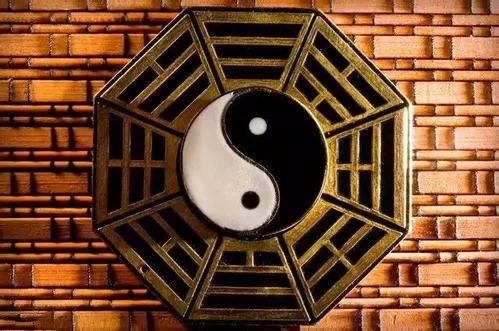
Yin-Yang is inherent in the world
The origin of Yang comes from the Dao. Laozi said: “The Dao forms the original unity, from which two opposing forces arise (two), these two opposing forces permeate each other (three), generating all things, the reverse side of all things is Yin, the front side is Yang, and the interaction of Yin and Yang reaches a harmonious state.” Thus, Yin and Yang, derived from the Dao, are the most fundamental opposing yet unified forces in the universe, possessing properties of opposition and complementarity. At the same time, they are also inherent in every entity. The manifestations of the opposition and unity of Yin and Yang are diverse.
In human terms, there is a distinction between male and female; in terms of the human body, the spirit is Yang and the essence is Yin, with distinctions between Yin spirits and Yang spirits, and Qi is similarly categorized. In terms of the relationship between heaven and earth, heaven is Yang and earth is Yin, mountains are Yang and water is Yin, and all entities such as mountains, water, grass, trees, earth, stones, ghosts, and spirits all embody Yin and Yang.
The rich connotation of the Five Elements
They categorize the basic properties of things and their relationships, reflecting the fundamental connections of all things in the world. The Five Elements are named Wood, Fire, Earth, Metal, and Water, each with rich content that cannot be enumerated one by one. Here, we will introduce some aspects commonly involved in Daoist daily practices and scriptures.
1. Five Elements: Wood, Fire, Earth, Metal, Water 2. Five Directions: East, South, Center, West, North 3. Five Colors: Green, Red, Yellow, White, Black 4. Five Flavors: Sour, Bitter, Sweet, Pungent, Salty 5. Five Stars: Jupiter, Mars, Saturn, Venus, Mercury 6. Five Qi: Eastern Green Tooth, Southern Red Dan, Central Wu Ji, Western Bright Stone, Northern Mysterious Nourishment 7. Five Organs: Liver, Heart, Spleen, Lungs, Kidneys
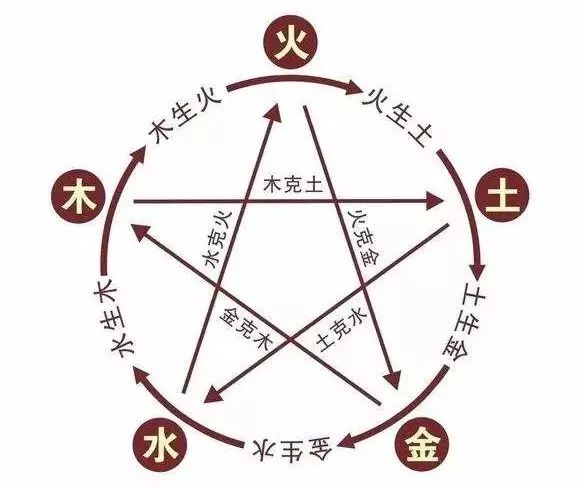
Mutual Generation and Restraint
The interrelationships of the Five Elements are primarily mutual generation and mutual restraint. Mutual generation refers to their ability to generate each other in a certain order. This generation is a continuous cycle. Mutual restraint refers to their ability to restrain each other in another order. Restraint and being restrained are also an endless cycle, where each restrainer can also be a restrained entity in another context.
Mutual generation is: Wood generates Fire, Fire generates Earth, Earth generates Metal, Metal generates Water, Water generates Wood
Mutual restraint is:
Wood restrains Earth, Earth restrains Water, Water restrains Fire, Fire restrains Metal, Metal restrains Wood
If we arrange the Five Elements in the order of Wood, Fire, Earth, Metal, and Water, then adjacent elements have a mutual generation relationship, while those separated by one element have a mutual restraint relationship. The Yin-Yang and Five Elements form an interconnected system. The relationship between Yin-Yang and the Five Elements has been discussed previously in the context of the Taiji diagram.
Taiji generates Yin and Yang, the interaction of Yin and Yang produces the Five Elements. Regarding this process, the “Yun Ji Qi Qian” volume 93, “The Theory of Yin-Yang and the Five Elements,” provides a more detailed explanation. The author states: “Yin and Yang differentiate and generate the Five Elements from ‘young’ to ‘old.’ Young Yang generates Wood, old Yang generates Fire, young Yin generates Metal, old Yin generates Water. The harmonious interaction becomes a couple.” Here, Earth is not mentioned because it is not confined to one place; it harmonizes with the other four elements, thus the harmonious interaction (harmonizing together) refers to Earth.
Yin and Yang generate the Five Elements, and each of the Five Elements can also be divided into Yin and Yang. For example, Fire can be categorized as human spirit and divine spirit, which can be further divided into Yin Fire and Yang Fire. Earth is represented by Wu Ji, which is associated with human consciousness, but consciousness can be divided into correct understanding and mixed thoughts. Correct understanding is the original spirit, representing Yang Earth, while mixed thoughts represent Yin Earth, which must be eliminated, hence the process of “self-cultivation.”
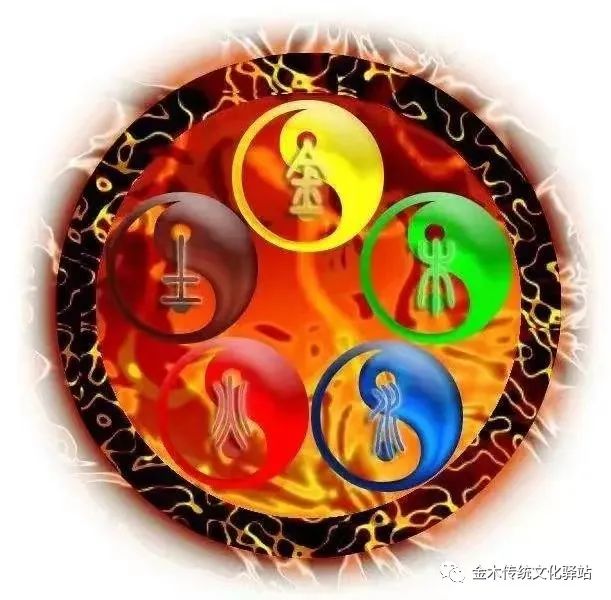
Yin-Yang and the Five Elements —-is a collective term for the theories of Yin-Yang and the Five Elements. It represents an ancient worldview and methodology for understanding and explaining nature. The Yin-Yang theory posits that the world we live in is born, develops, and changes under the interaction of the two Qi of Yin and Yang.
The Five Elements represent a culture. The Five Elements theory posits that Metal, Wood, Water, Fire, and Earth are the essential basic materials that constitute the material world. The interactions and changes among these five basic materials form the material world. The term ‘element’ does not refer to walking but represents movement, implying kinetic energy in contemporary terms.
Metal — does not refer to gold but signifies solidity and condensation.
Wood — represents the function and source of life. The Chinese character for “life” is a good representation of “Wood” in the Five Elements. “Life” is a pictogram, with the character for “Earth” below and the upper part representing a branch and a leaf sprouting from the earth.
Water — represents flow, embodying circulation and surrounding movement.
Fire — represents thermal energy.
Earth — represents the Earth itself. Thus, Earth occupies the central position among the Five Elements.
The Five Elements —- indicate that these five materials are interchanging and influencing each other. This change and influence are referred to as generation and restraint. Generation and restraint are terms used within the Yin-Yang theory.
The Yin-Yang and Five Elements can be divided into “Yin-Yang” and “Five Elements,” yet both mutually complement each other; the Five Elements must incorporate Yin-Yang, and the Yin-Yang theory must include the Five Elements. The Yin-Yang and Five Elements form the core of classical Chinese philosophy, representing a primitive materialistic philosophy.
Yin-Yang refers to the two opposing yet interconnected forces present in all things in the world;
The Five Elements, namely “Wood, Fire, Earth, Metal, Water,” are constituted by the operations and changes of these five basic materials, emphasizing a holistic concept.
The convergence of the two major theories of Yin-Yang and the Five Elements forms the framework of traditional Chinese thinking.

Yin Yang
The Yin-Yang theory was established as early as the Xia dynasty, positing that the two opposing Qi of Yin and Yang are the source of all things in heaven and earth. The union of Yin and Yang allows for the growth of all things, forming various natural phenomena such as wind, clouds, thunder, and rain in the heavens, and rivers, seas, mountains, and valleys on the earth, as well as the four cardinal directions: East, West, South, North, and the four seasons: Spring, Summer, Autumn, Winter.
Everything can be divided into two, which is the essence of Yin and Yang. The Dao gives birth to one, one gives birth to two, two gives birth to three, and three gives birth to all things.
Yin and Yang represent an abstraction of the opposing yet complementary properties of the universe’s myriad phenomena, embodying the unity of opposites and serving as a philosophical category of the laws of thought. The ancient sages coined the term “Yin-Yang” to express the correspondence and opposition of all things, as stated in Laozi’s “All things bear Yin and embrace Yang” and in the “Book of Changes” as “The way of Yin and Yang is called Dao.” The “Book of Changes” discusses the mathematical and philosophical principles of the changes of Yin and Yang.
The Yin-Yang theory is an important theory in ancient Chinese auspiciousness techniques. Some believe that the concept of Yin and Yang was formed as early as the Xia dynasty, as the Yin and Yang lines appear in the Book of Changes’ Eight Trigrams, which were recorded in the divination text “Lian Shan” from the Xia dynasty.
Yin and Yang can transform into each other, and both are interdependent. This means that each aspect of Yin and Yang exists as a premise for the other. Without Yin, Yang cannot exist; without Yang, Yin cannot exist. Just as without Qian, there is no Kun, and without heaven, there is no earth. Yin and Yang are interdependent and mutually beneficial.
The interdependence of Yin and Yang is a dynamic process that accompanies the life of an entity, determining the course of its development.
Five Elements
The Five Elements theory is also a philosophical thought created by the ancient Chinese people. It uses the five basic materials of daily life: Metal, Wood, Water, Fire, and Earth as the foundation for the changes of the universe and various natural phenomena.
Each of these five materials has different properties, such as Wood having the nature of growth and development; Fire having the nature of heat and upward movement; Earth having the nature of peace and stability; Metal having the nature of harshness and contraction; and Water having the nature of coldness and nourishment. The Five Elements theory categorizes the properties of all things in nature into these five major categories.
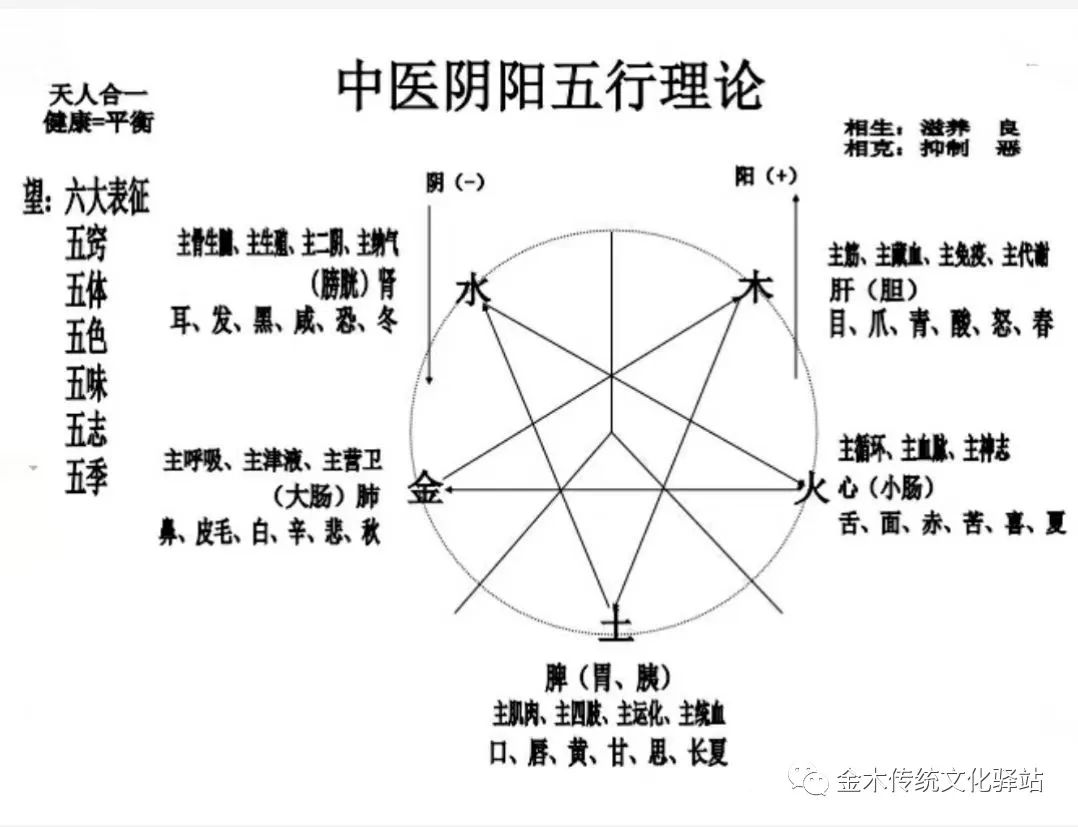
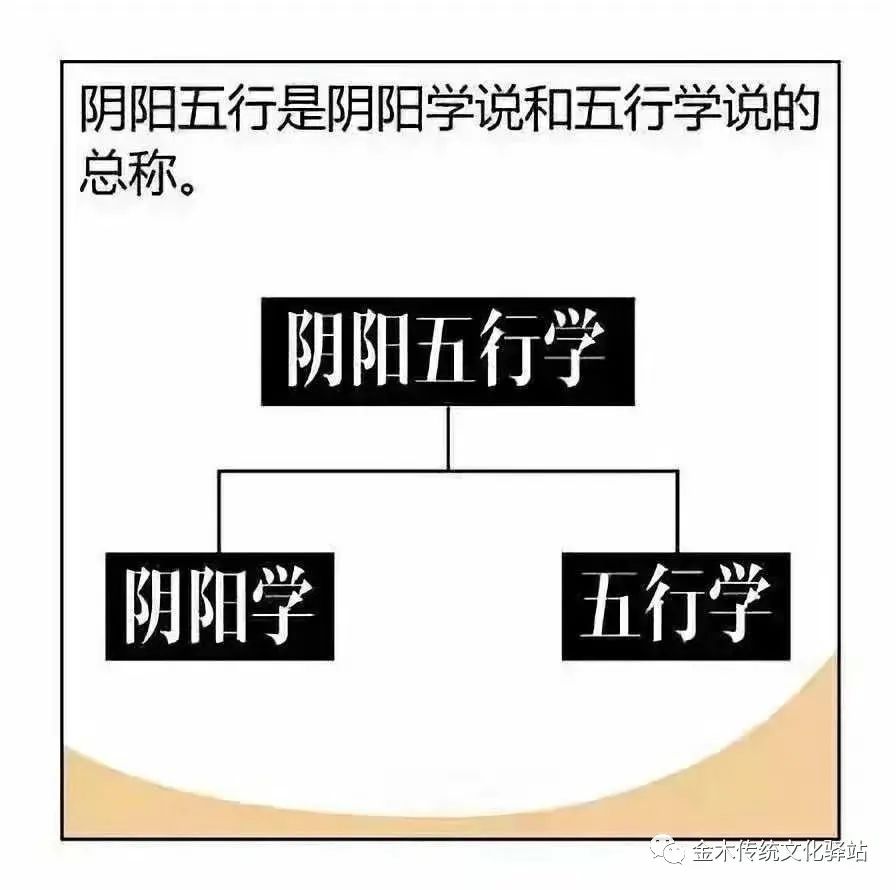
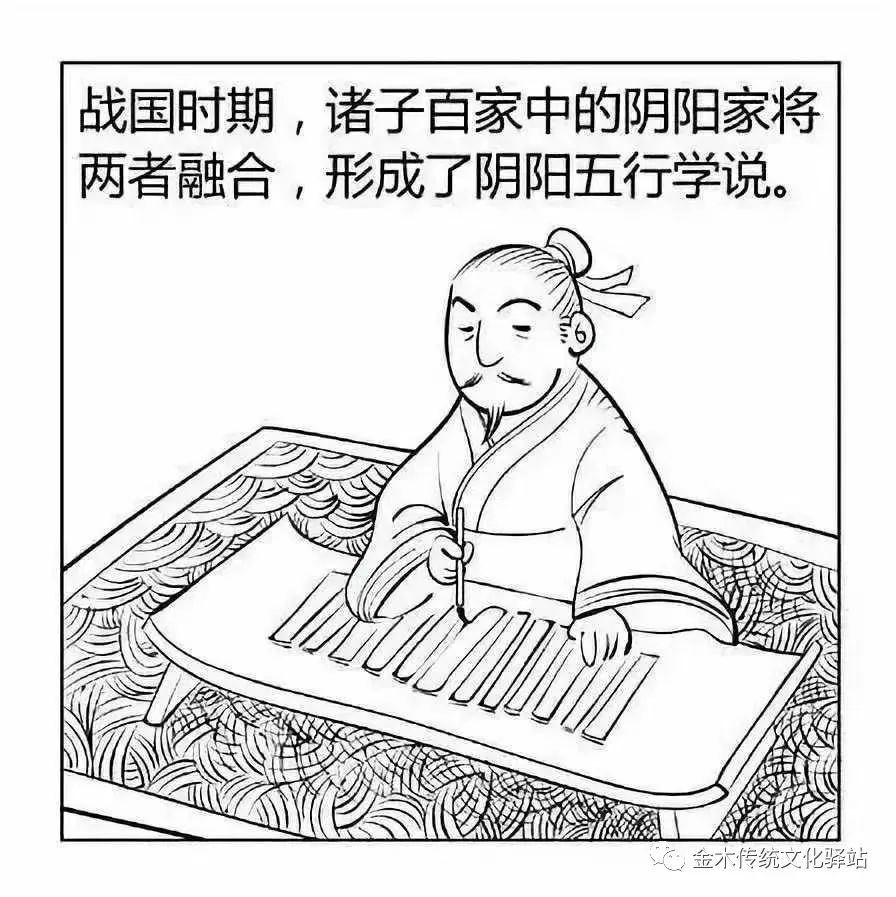
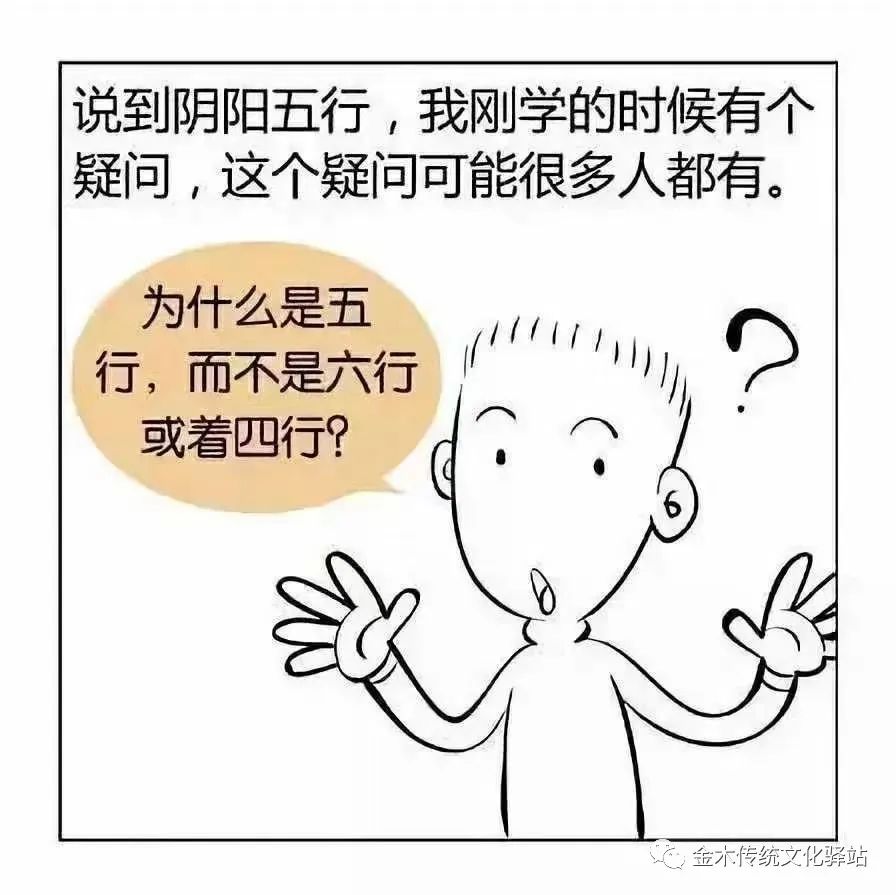
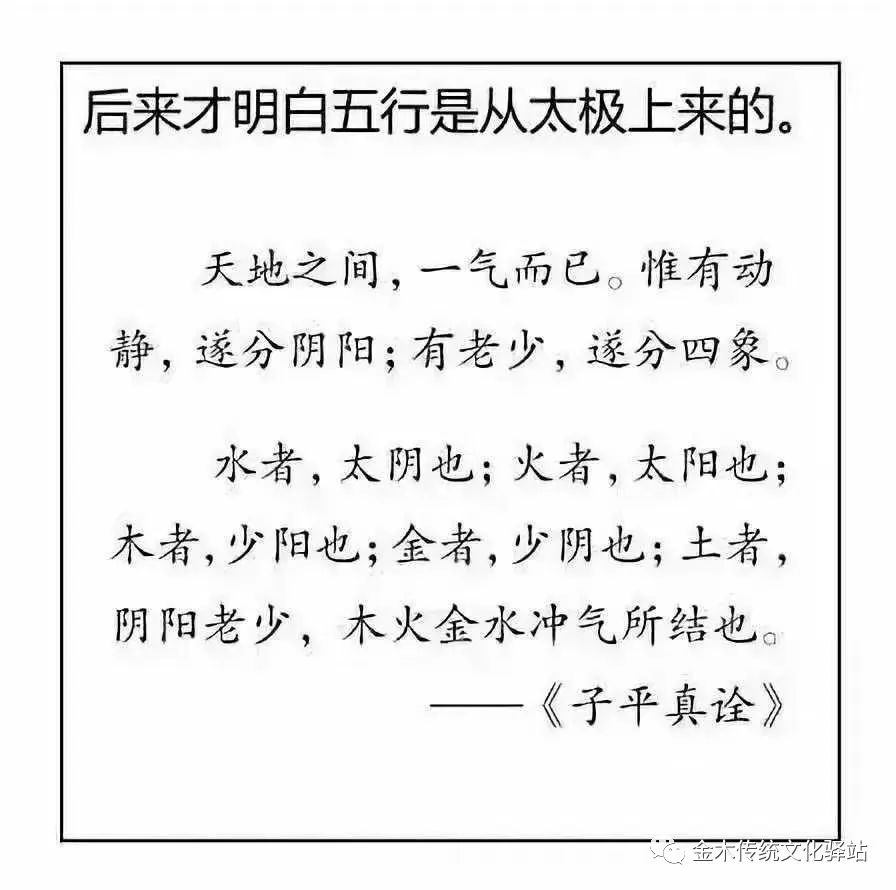
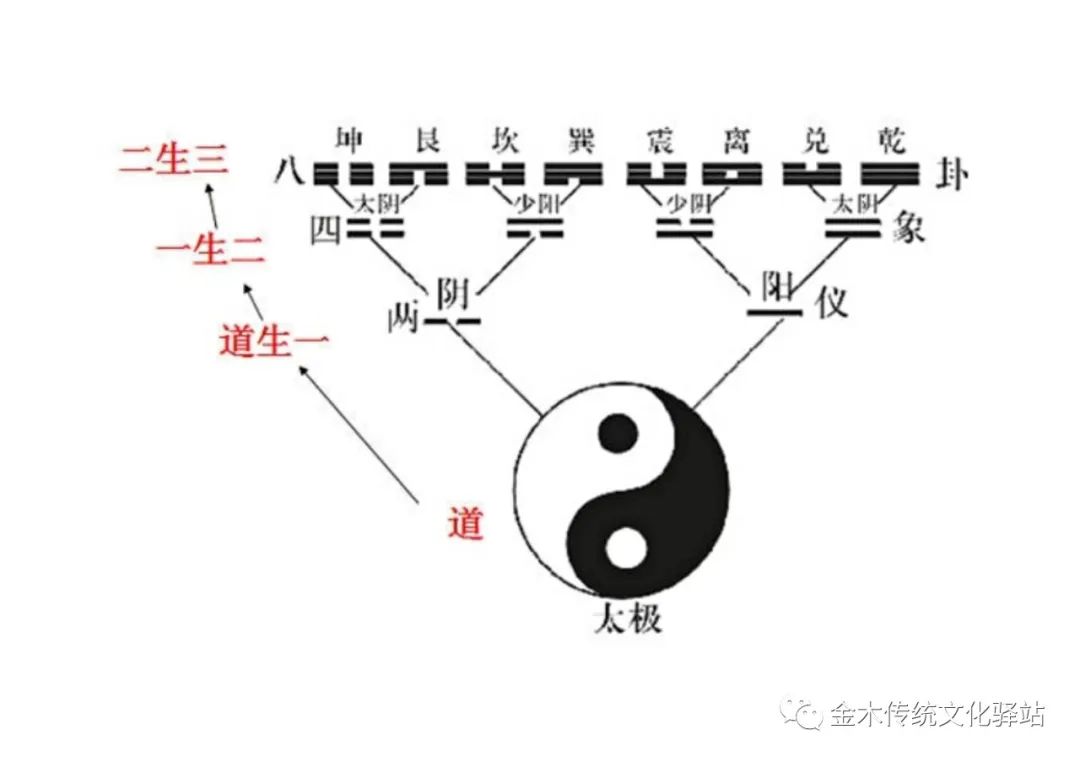
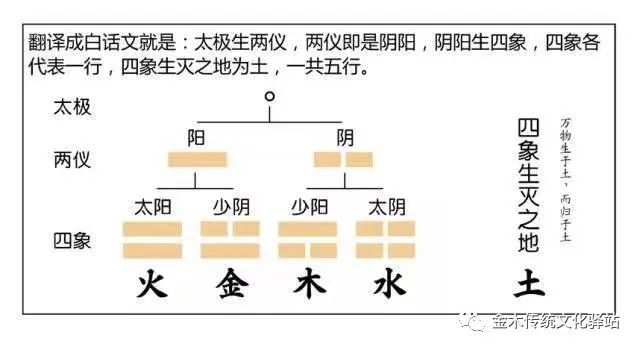
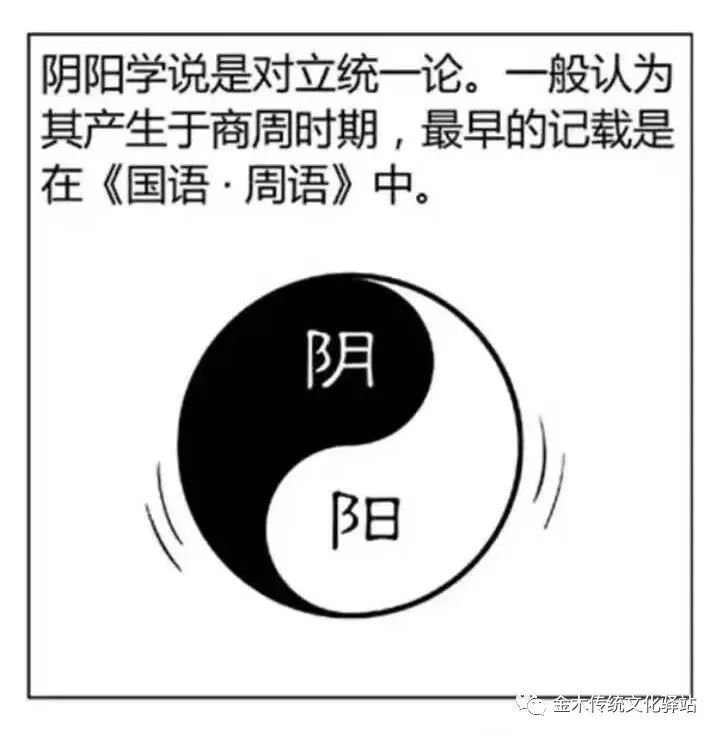
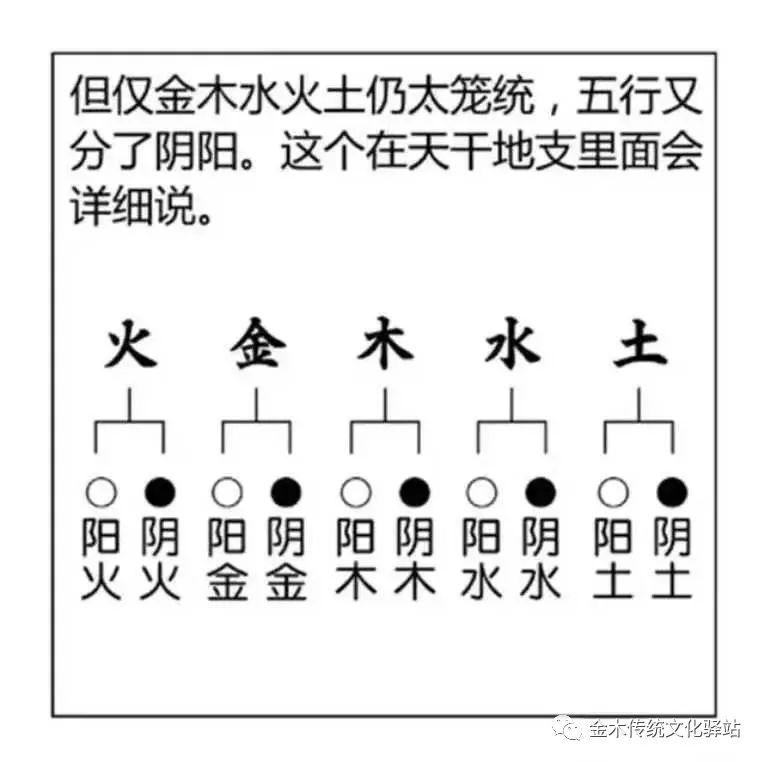

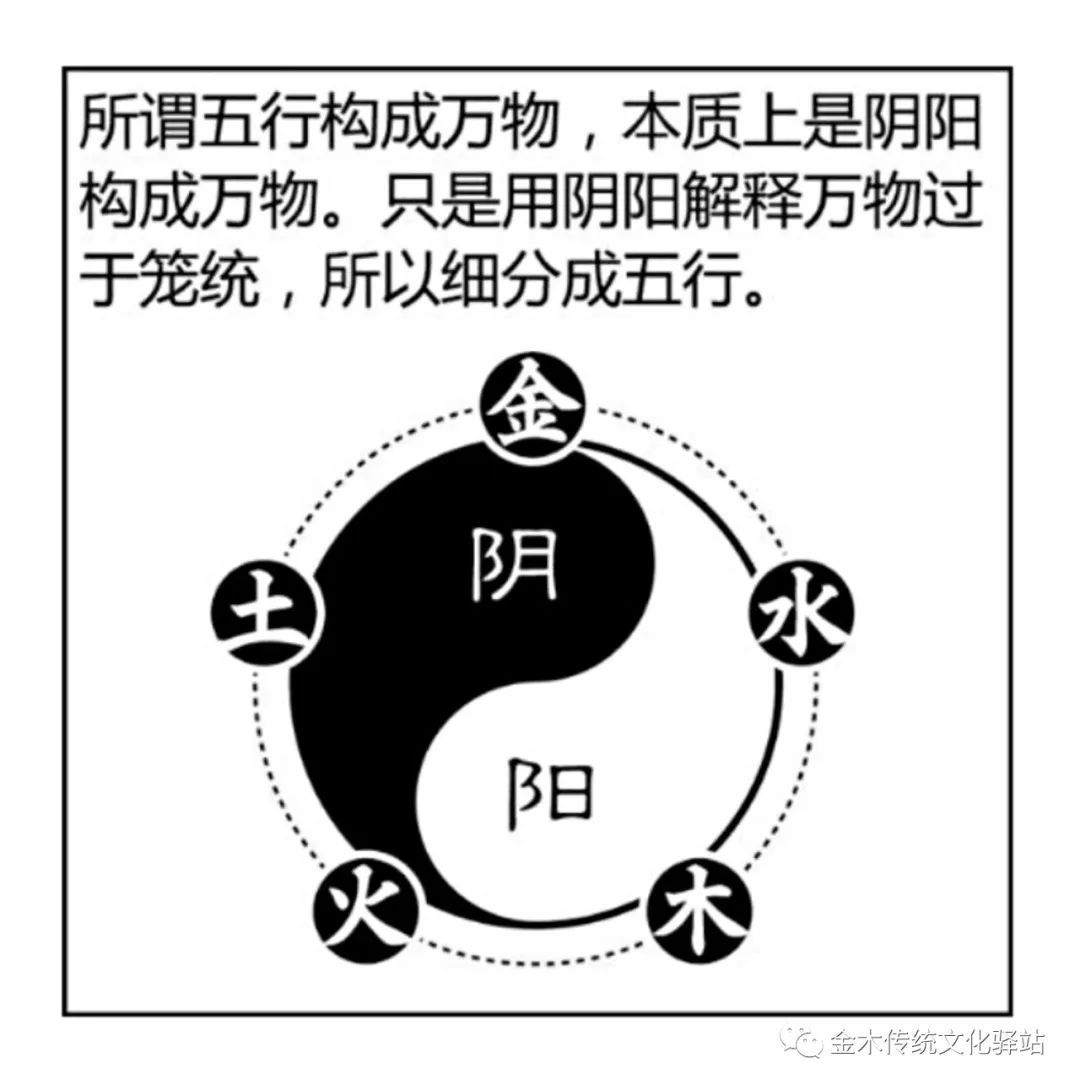
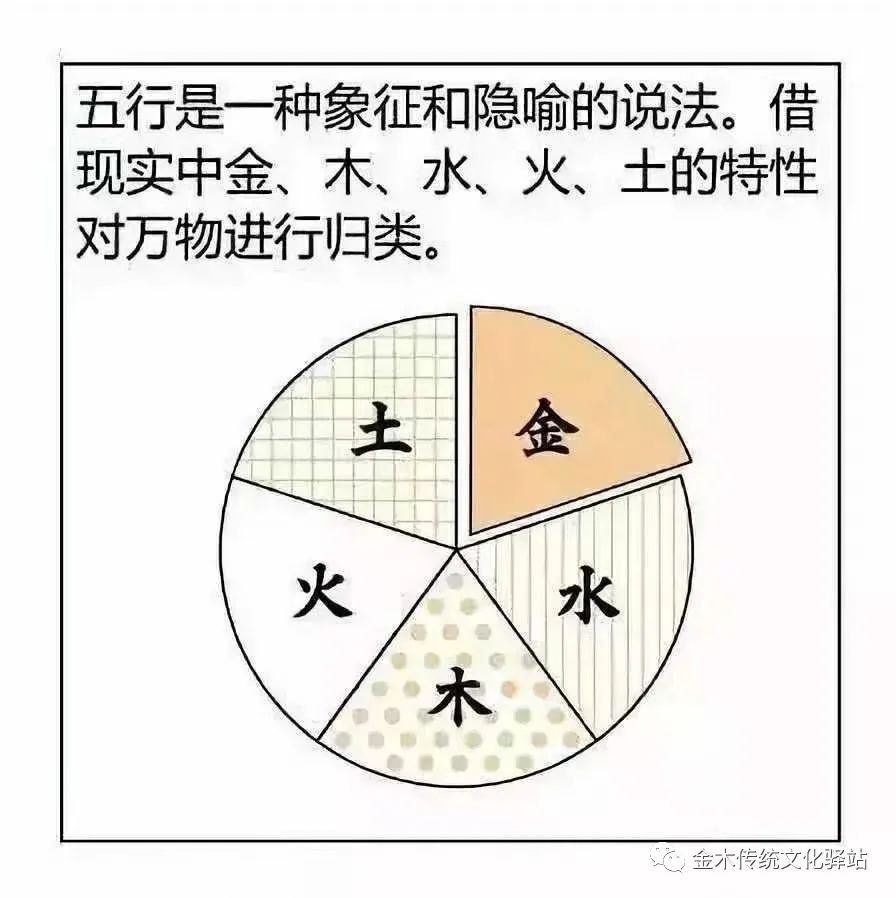
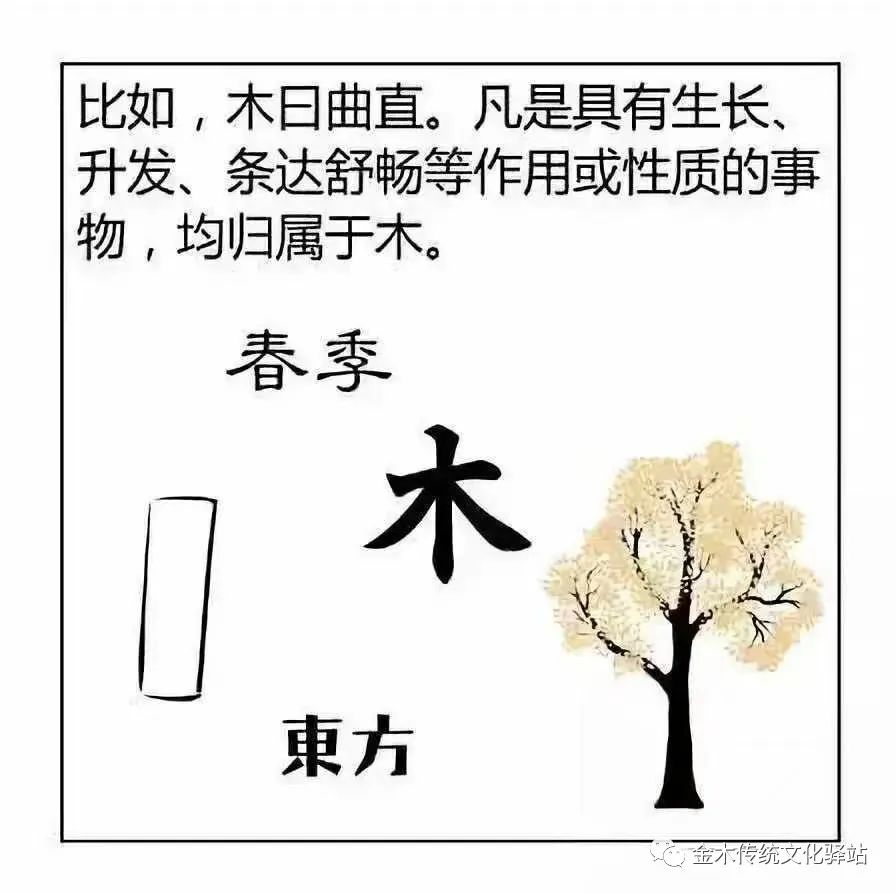
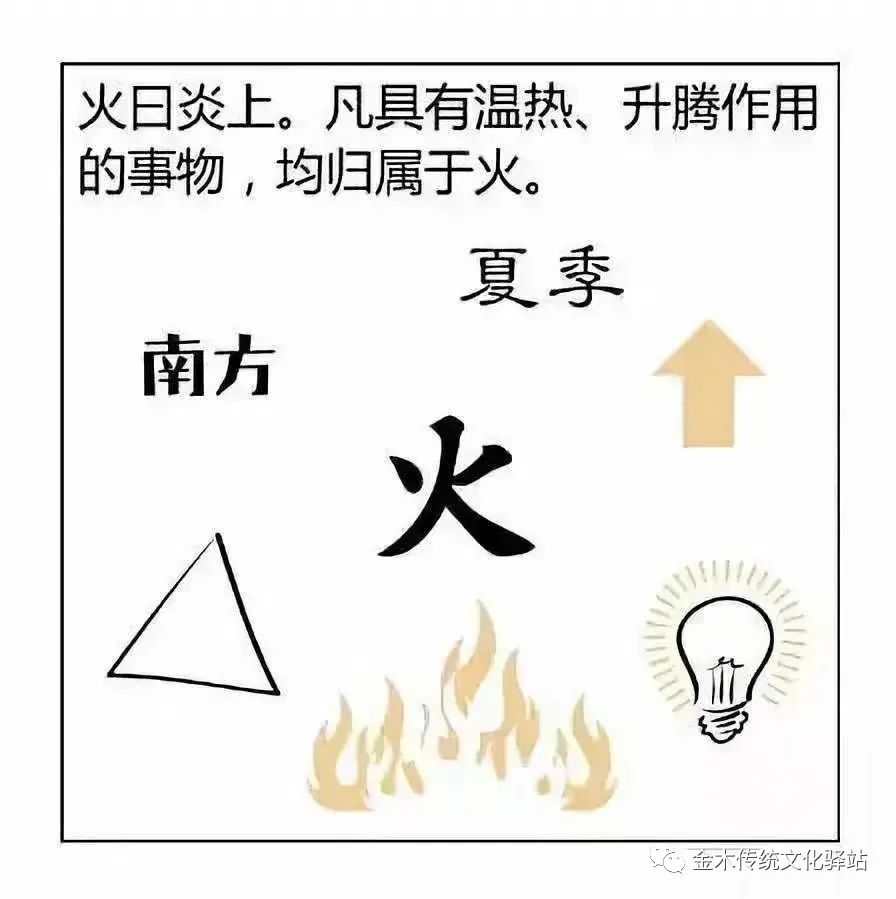



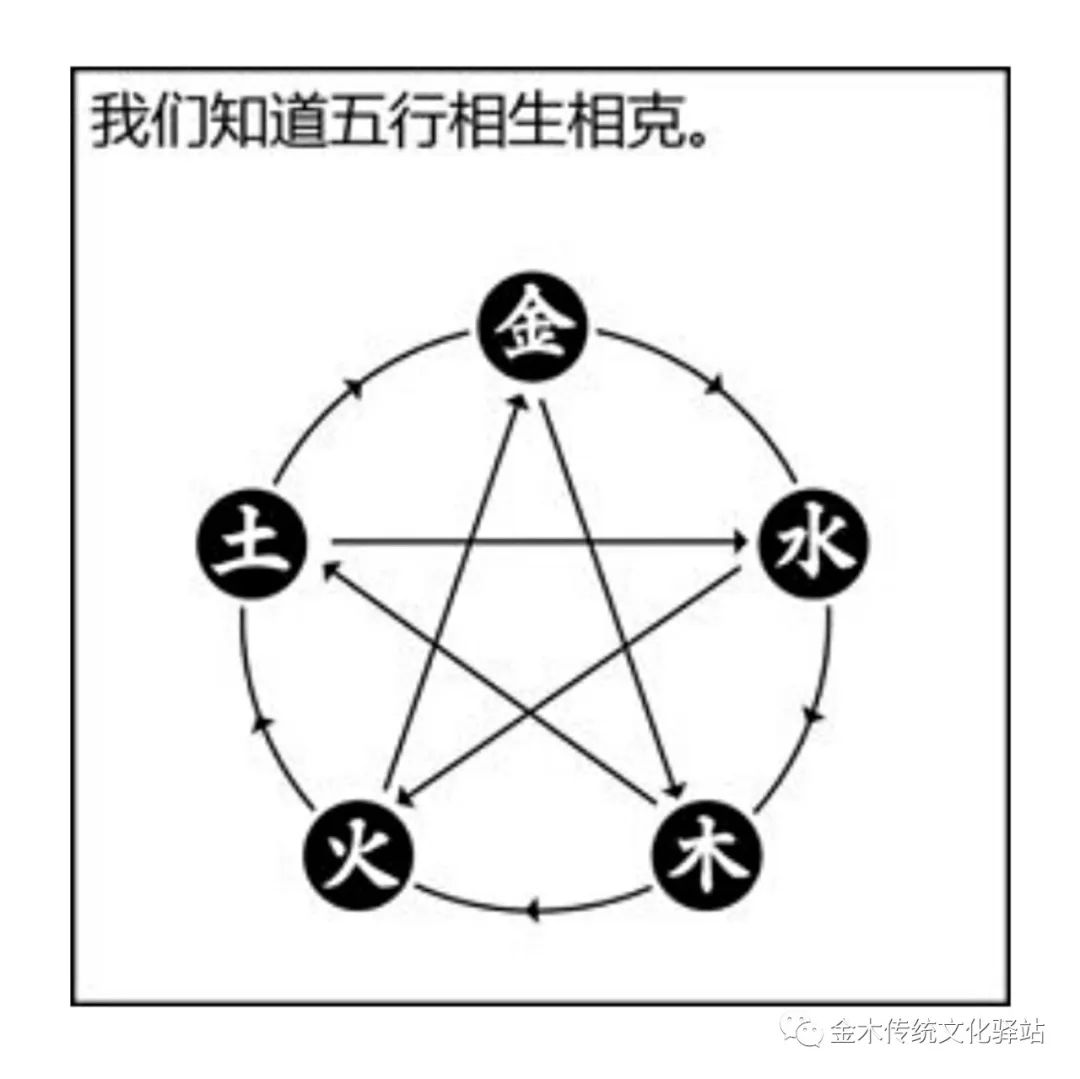
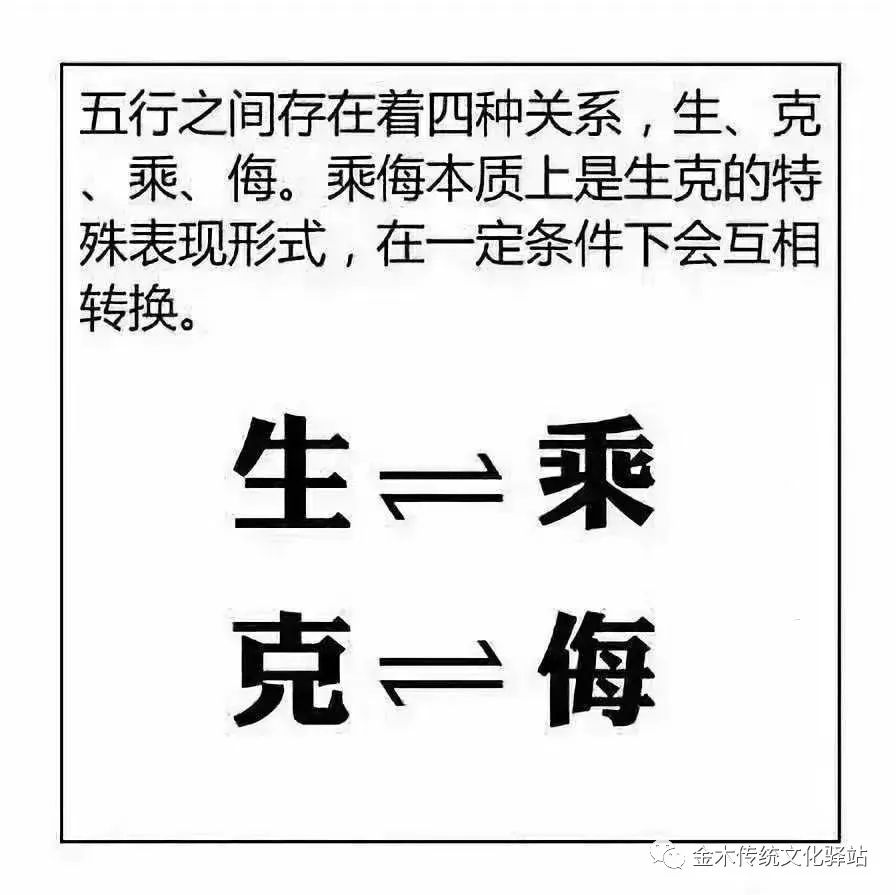
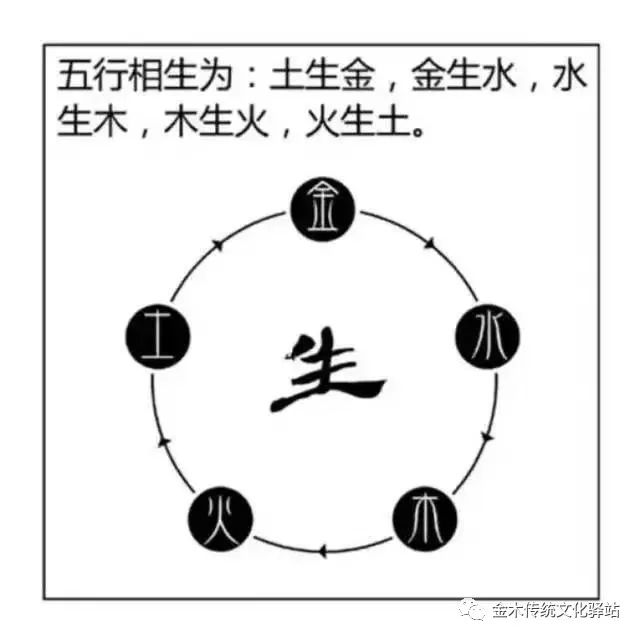
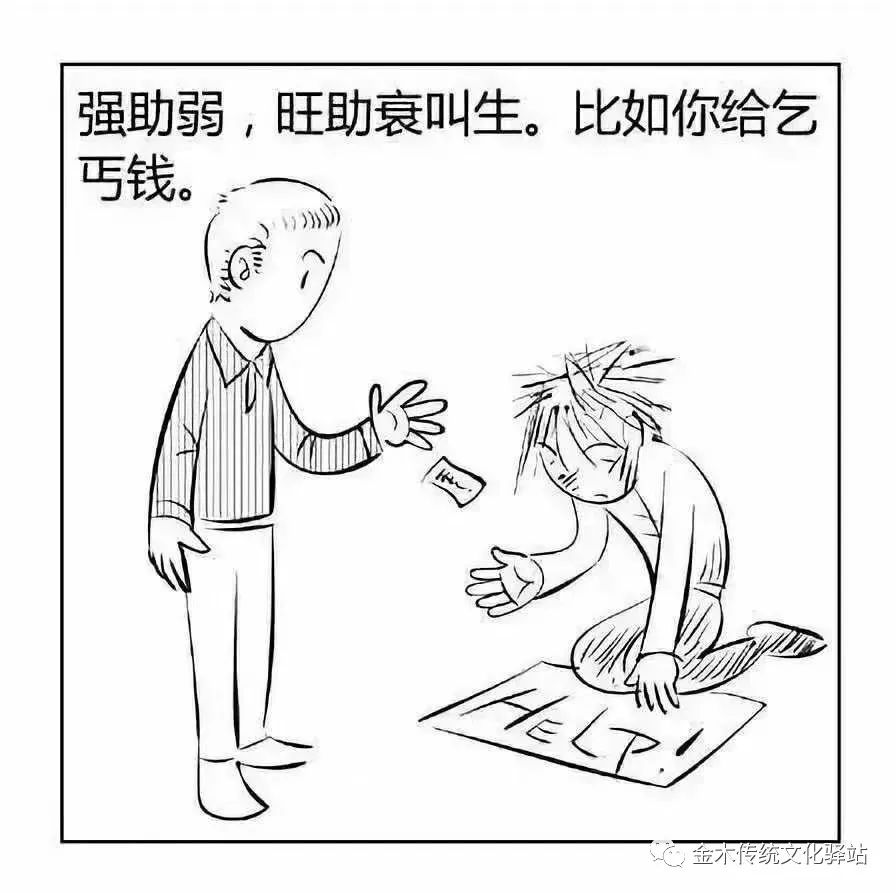
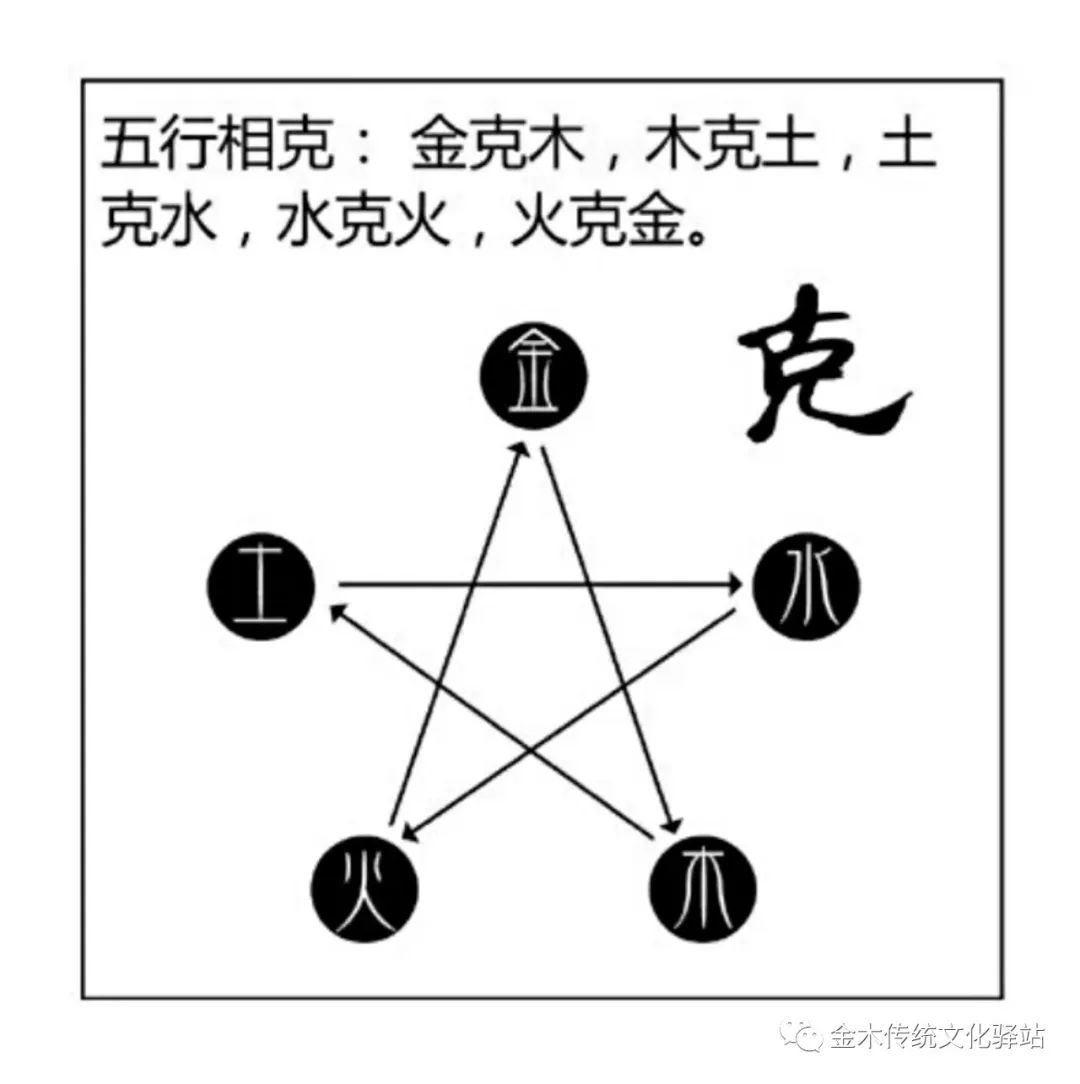
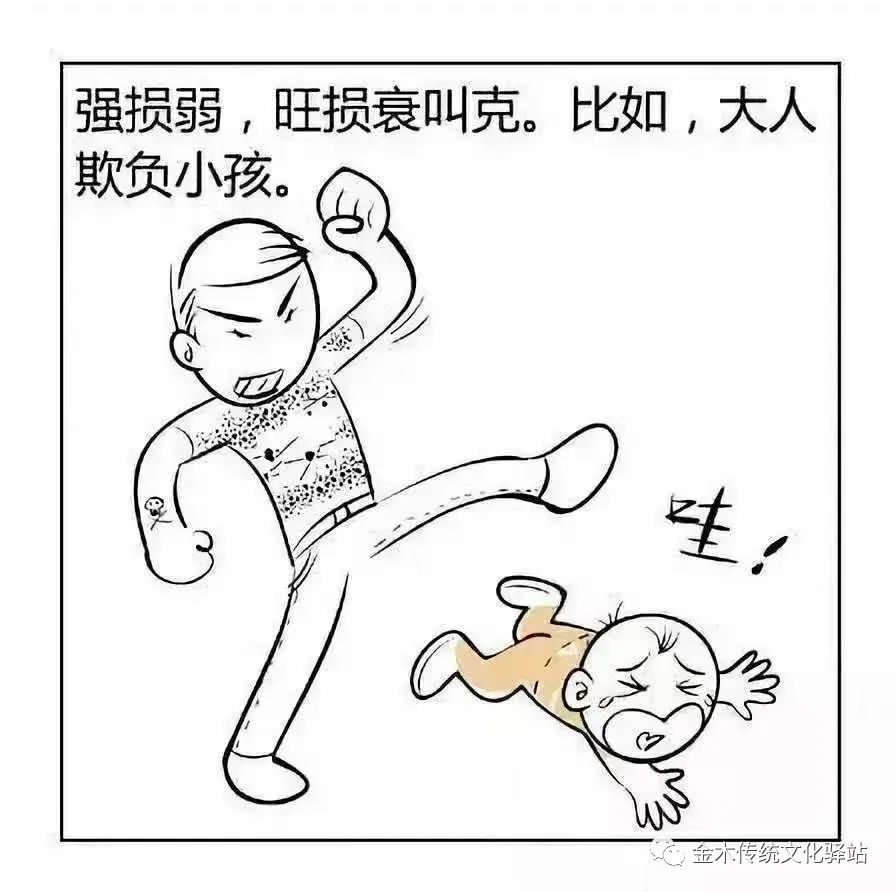
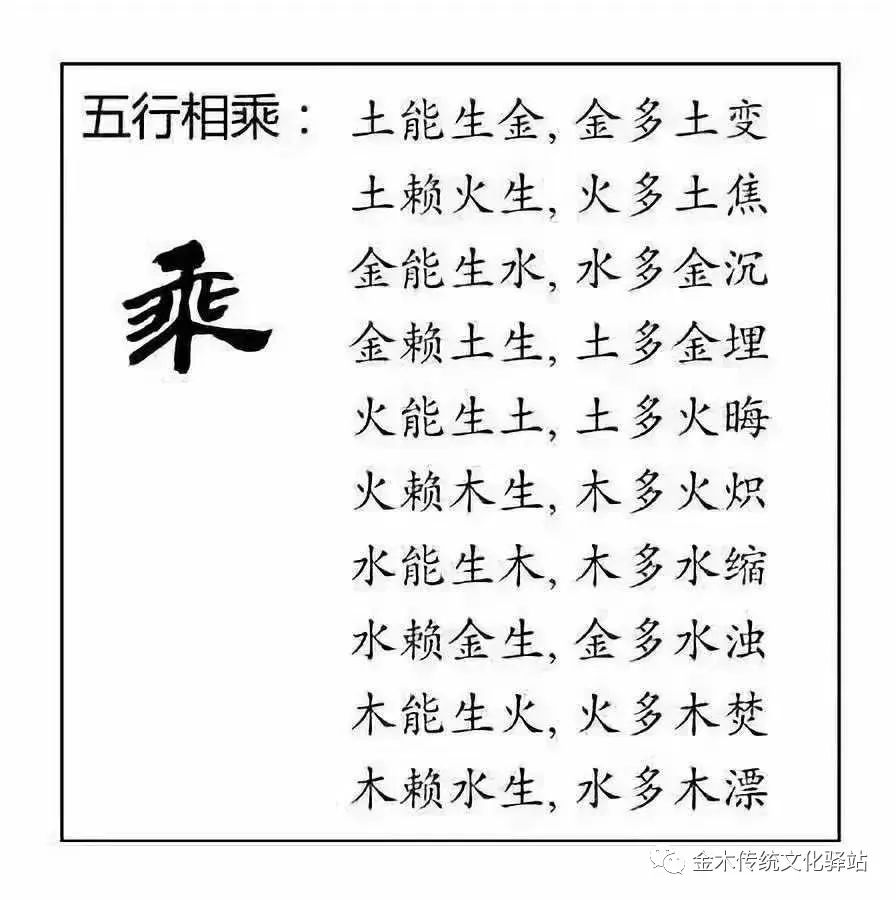
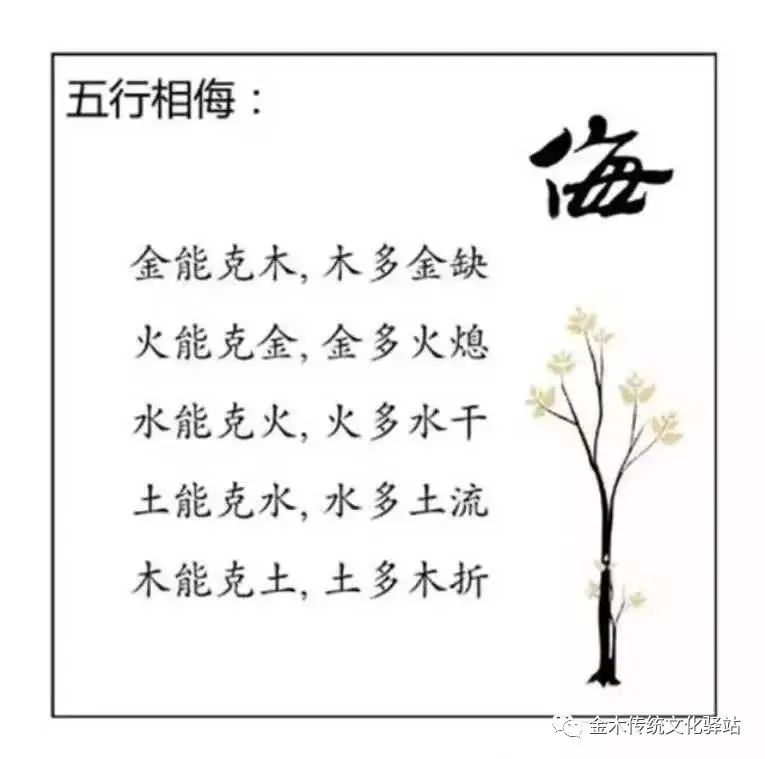
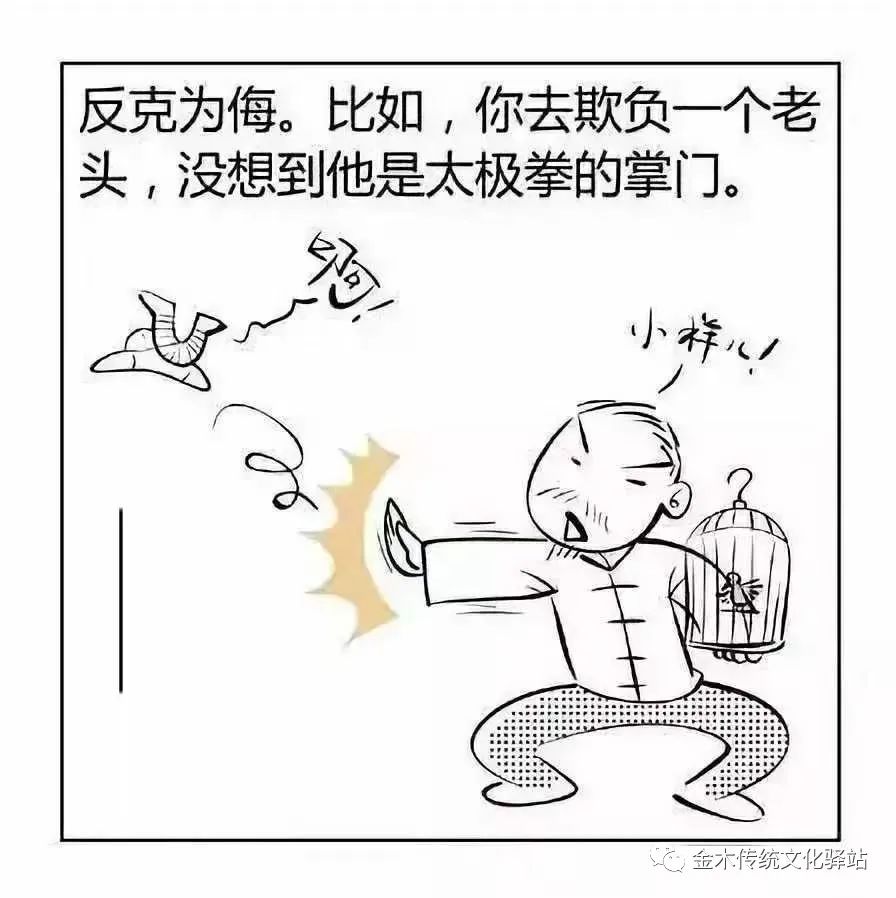
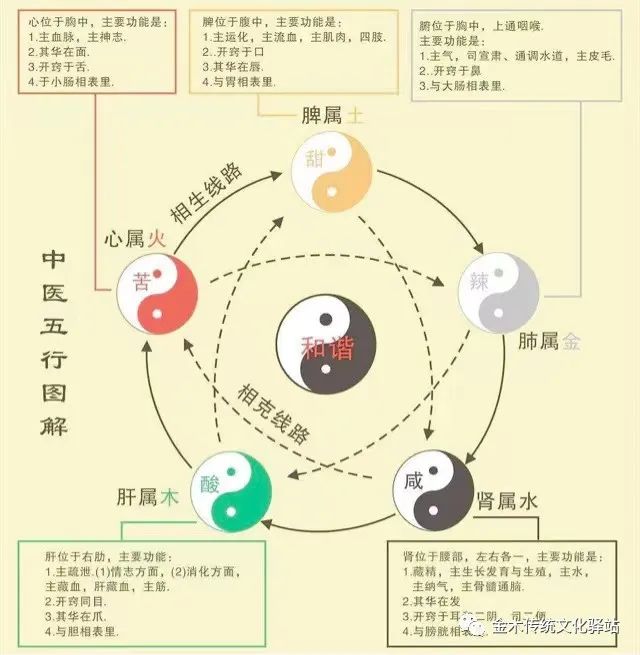
Disseminating knowledge of Chinese medicine and health preservation, promoting traditional Chinese culture,sharing health concepts, conveying care, and passing on health knowledge and traditional culture to more friends…
People are great because of their dreams; we are different because of our love.
Liu Ling Ning: 186 9643 6785 or (WeChat ID)
Yang Shun Song: 138 7171 7447 or (WeChat ID)
